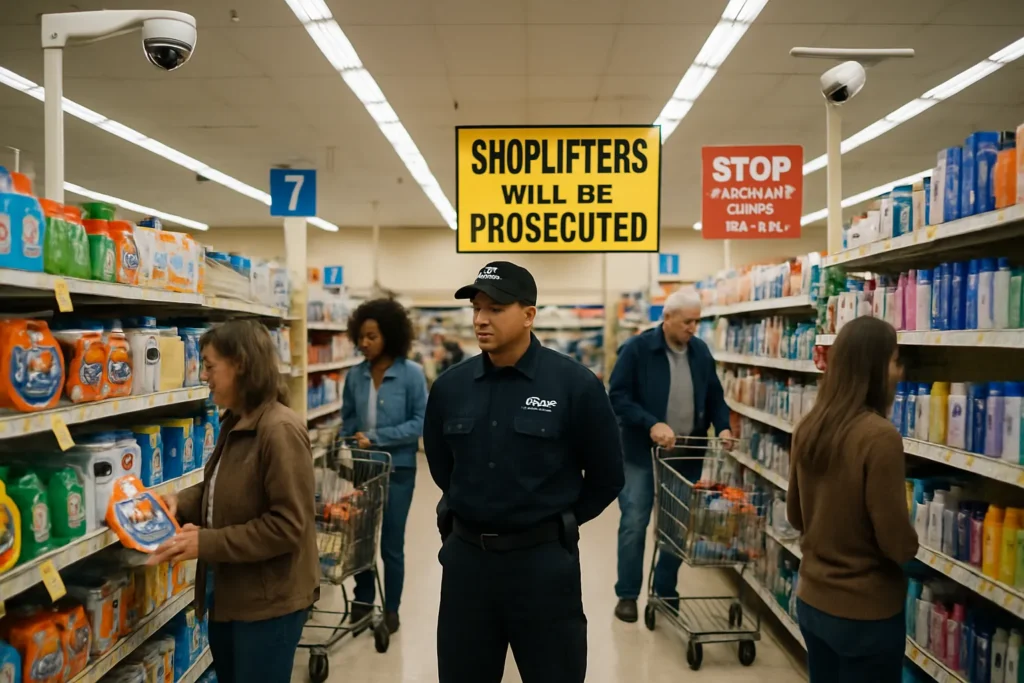A County at a Crossroads: Behind the Push Against Retail Theft
At the bustling intersection of Pico Boulevard and Union Avenue, the frustration was palpable as another local 7-Eleven counted the cost of its twelfth theft in just a handful of weeks. Los Angeles County District Attorney Nathan Hochman, flanked by city council members and police brass, chose this very spot—a microcosm of a wider crisis—to launch his new initiative against the surge in retail theft plaguing Southern California’s communities. In his words and actions, the urgency of restoring public confidence in local business safety was impossible to ignore.
For franchisees like Jawad Ursani, the repeated break-ins have become more than a line item in a ledger. “We invest thousands just to keep our store open at night now; that money could’ve helped us stock shelves or give back to our neighborhood,” Ursani explained, echoing the hard choices small business owners confront daily.
A growing chorus of local merchants has voiced similar concerns. Retailers from Boyle Heights to Santa Monica have watched shoplifting escalate into brash, coordinated “smash-and-grabs.” According to a 2023 National Retail Federation study, organized retail crime cost U.S. stores an estimated $112 billion last year alone. It’s a mounting problem that underscores why progressives and moderates alike are demanding both effective crime deterrence and compassionate justice reform. The challenge? Striking a balance that protects livelihoods without backsliding into the punitive excesses of the past.
The New Tools and Tactics—and the Politics of “Tough” Justice
Hochman’s new coalition relies on two headline measures. First, a bright yellow warning sticker—borrowed from a policy first tried in Sacramento—now graces shop windows from Pacoima to Palms. Its bolded message signals that the premises are protected by L.A. County’s Organized Retail Crime Task Force. Second, Hochman is doubling down on enforcement of Proposition 36, invoking felony charges after a third arrest for certain theft and drug crimes. Since December 2024, over a thousand arrests have reportedly been made under this law; this rapid implementation draws both praise and pointed questions.
“We can’t just scold repeat offenders, or shrug off small businesses’ needs. But let’s not mistake stickers and soundbites for a real solution to root causes—poverty, addiction, lack of opportunity—if we actually want safer communities.”
Hochman was openly critical of his predecessor George Gascón, accusing the previous administration of “missing the moment” by failing to secure state funds for anti-theft initiatives. This swipe is classic L.A. politics: in a county roiled by debates over criminal justice reform, every prosecutorial shift is also a referendum on the last DA’s policies.
Some see stiffer prosecution as long overdue. Others, including social justice advocates and criminology experts, warn against a return to punitive strategies that disproportionately harm marginalized groups. “The risk is that we repeat the mistakes of the ‘tough-on-crime’ era—filling jails instead of addressing what causes these crimes,” notes Dr. Emily Carter, a professor at UCLA’s Department of Public Policy. “Accountability is essential, but let’s not lose sight of holistic solutions.” Doing so, she argues, fosters cycles of poverty and recidivism rather than lasting safety.
What Real Safety Looks Like: Justice, Community, and the Road Ahead
Law enforcement’s coordinated presence at the DA’s rollout—the LAPD, Sheriff’s Department, and California Highway Patrol—sent a message: tackling retail theft is seen as both a policy priority and a political imperative. Involving LA City Councilmembers Katy Yaroslavsky and Traci Park brought credibility and urgency to the cause, but also highlighted that local government alone cannot solve structural crises in isolation. Retail theft is a symptom, not the disease.
There’s no doubt that merchants deserve security and thriving business corridors, and that brazen store robberies can erode a neighborhood’s trust. At the same time, progressive cities like Los Angeles are called to think bigger—integrating prevention, economic mobility, mental health, and re-entry programs with traditional policing. Harvard sociologist Bruce Western has repeatedly demonstrated that cities investing in social supports, youth mentorship, and worker retraining see lower recidivism and deeper community resilience.
The yellow sticker may be a useful quick deterrent. Felony charges might satisfy public calls for order. But unless we match enforcement with innovation—expanding diversion programs, strengthening urban schools, tackling the opioid crisis, and funding after-school initiatives—these measures risk becoming blank Band-Aids. LA’s leaders owe citizens the full spectrum: real safety, rooted in both justice and opportunity.
Isn’t it time you demanded more from policymakers than recycled slogans or incremental fixes? Crime prevention means confronting why desperation wins out for some, ensuring second chances, and protecting every part of our community—not just the storefronts, but the people behind them.

